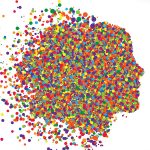However, they are applied in different ways. You can have the best DAM in the world, but without metadata, it is of no use!
A full warehouse is of no use if you can not locate the products within it.
Let’s examine categories and keywords by comparing our DAM system to a warehouse full of products. In the warehouse, we group our products in departments. In our DAM, we assign categories to related digital assets as a starting point.
E.g. large sets of assets could be: animals, people, architecture. We think of categories as classifiers, that is concepts that describe related groups.
Now you might ask: “What are keywords for?” Keywords (tags) describe the content featured in your digital asset. E.g. if the category is people, keywords could be age groups, ethnicities, gender or other attributes.
If our warehouse is that of a department store, categories are different departments. E.g. furniture, appliances, garden equipment, etc. Keywords describe individual products. E.g. double bunk children’s bed, two slice toaster, lawn fertilizer, et cetera.
Categories, keywords, and SEO
Search engines will scan the digital assets you post online. With meaningful categories and keywords assigned, web crawlers will understand their content.
A sample Category structure in Daminion
This will, in turn, boost the SEO score of the page it appears on. Higher SEO scores increase the likelihood of a higher ranking of that page.
In short, add strategic metadata to the images you post online. They will serve as a signpost pointing back toward your company.
Productivity
Implement a robust, sensible system of categories and keywords. As a result, your team’s productivity will increase. Eliminate the time wasted searching for digital assets.
If you add this lost time over a year, your team gains days or even weeks. This, above all, will boost the adoption of your DAM and add value to your business.
There is no right or wrong way to go about this. There are only efficient and non-efficient ways. Arriving at the destination (relevant categories and keywords) is a process. It is trial and error involving teamwork, revision, time and perseverance.
Divide and conquer
In conclusion, this is the way that most of us sort large volumes of information. We identify similarities between objects. Then group them into more manageable, bite-sized chunks.
These groups are much easier to approach since the items within them are related. As a result, you will only be dealing with a subset of your taxonomy. The editors can focus on one area when tagging.
Getting started with Daminion
Are your corporate digital assets still disorganized or you want to check this? Request a demo and get all your questions answered with one of our resident customer champions.








